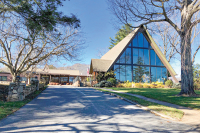Intersection of American minds
American Bloomsbury by Susan Cheever. Simon & Schuster, 2006. 240 pages
Susan Cheever, novelist, critic, and writer of acclaimed memoirs (Note Found in a Bottle and Home Before Dark) shifts her interests to the field of literary biography in American Bloomsbury. Subtitled “Louisa May Alcott, Ralph Waldo Emerson, Margaret Fuller, Nathaniel Hawthorne, and Henry David Thoreau: Their Lives, Their Loves, Their Work,” American Bloomsbury tells of the tangled lives of these writers who exerted quite an influence on their native land.
Though these authors have received the attention of numerous biographers, Cheever fills a gap by showing us how they lived together, spent time in one another’s company, and either helped or hindered each other’s work. Through their letters and literary works, we also gain a deep appreciation of Concord, Mass., where all of these authors lived at various times. In this town, as Cheever says, “these men and women fell desperately in and out of love with each other, tormented each other in a series of passionate romantic triangles, edited each other’s work, talked about ideas all night, and walked arm in arm under Concord’s great elms.”
In her opening remarks to American Bloomsbury, Cheever promises to tell us the story of these people and their struggles, not only their literary and political battles, but their love triangles and troubles rearing children, their friendships, and their failures in friendship. Here is a bold promise indeed, but one on which Cheever makes good.
She does so in part by the remarkable way in which she blends the lives of all these protagonists. They intersect in the two decades before the Civil War when Emerson, one of the few of these writers whose essays and lectures actually brought him a living, enticed the Alcotts and the Hawthornes to come to Concord by giving them houses either rent-free or low in rent.
Bronson Alcott‘s ideas regarding communal farming grew to “their looniest ripeness” while Margaret Fuller brought to bear sexual magic on Emerson and Hawthorne. Cheever traces the gradual dissolution of this community, the result of the ravages of age and growing differences in political opinions.
Related Items
Especially fascinating are the passages devoted to Louisa May Alcott, an author whose work Cheever has admired since girlhood. Cheever makes us feel the struggles of the young Alcott, when she and her family lived constantly on the brink of poverty, passing from Concord to Boston and then to Dedham, starting schools and doing odd jobs in their efforts to find some stability. During the Civil War Alcott served briefly as a nurse in Washington, D.C.; she had the ill luck to arrive just as the bloody Battle of Fredericksburg took place. The strain of nursing the wounded and the dying round the clock ruined her health within weeks. She returned home an invalid, yet nevertheless wrote Little Women and pulled her family out of its financial quagmire. According to Cheever, Alcott also “exalted the everyday in women’s literature and gave it greatness.”
Though Cheever writes with great sympathy for all these protagonists — her account of Emerson in particular made me want to learn more about the man other than the few essays I’d read long ago in school — she does not hesitate to criticize them. We read at length of Louisa May Alcott’s drug addiction. We see that Hawthorne in his relationships with women is “a man of secret lives, of doubleness, whose understanding of deceit and betrayal perfumes his greatest scenes.” We learn how poorly Thoreau and Bronson Alcott function in the world in terms of earning a living. Both men were continually dependent on Emerson for their food and lodging.
American Bloomsbury also captures the attention certain writers received in New England‘s literary circles. When Emerson was an old man, for instance, his house caught fire, and though he and his friends managed to save many of his possessions, he faced the prospect of financial ruin. Friends raised by solicitation enough money to send him on a tour to England, and in a sort of 19thcentury version of “Extreme Makeover,” they rebuilt his house in his absence exactly as it had been. Emerson returned home to an enormous celebration that included a mob of his friends, bands, a choir of schoolchildren, and an impromptu parade to his restored home.
In her last chapter, Cheever writes that she had intended the book as an introduction to Concord so “that the reader will come to love it as I have.” Her lovely book should entice all of its readers to explore this town which its writers once regarded as their own personal Eden.
•••
Local author James Cox has recently published The Christmas Curmudgeon: A Christmas Story for Guys, a novel about excessive consumerism at Christmas and the efforts of two brothers to change their attitudes toward the holiday and toward life. To order this book, call your local bookshop or 1-877-BUY BOOK.
The Thomas Wolfe Festival will take place the first weekend in October. The festival includes tours of the Wolfe home, of various gravesites in Riverside Cemetery, a play and a film about Wolfe, and several other events. If you haven’t read Wolfe or visited the historic site in Asheville, now is the perfect time to acquaint yourself with one of North Carolina’s greatest authors. For more information and a complete schedule of events, log on to www.wolfememorial.com.









